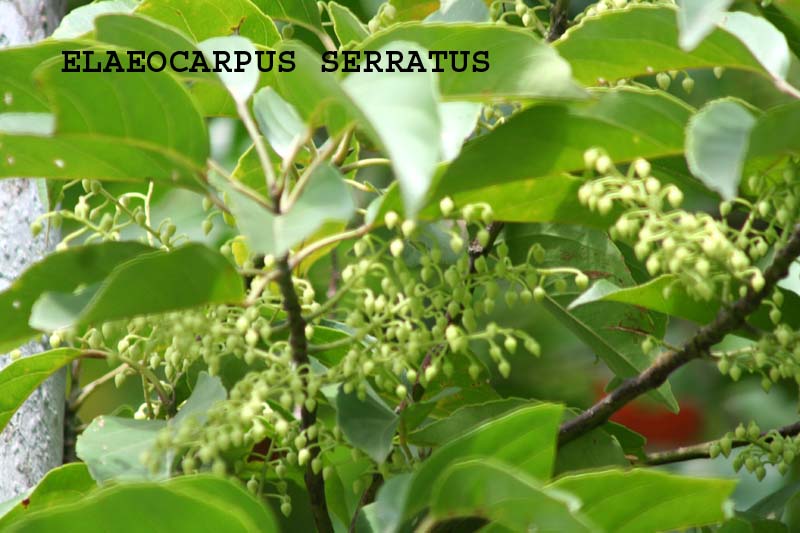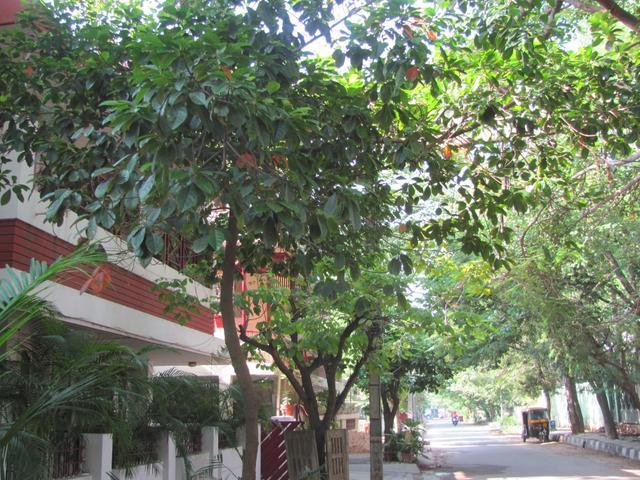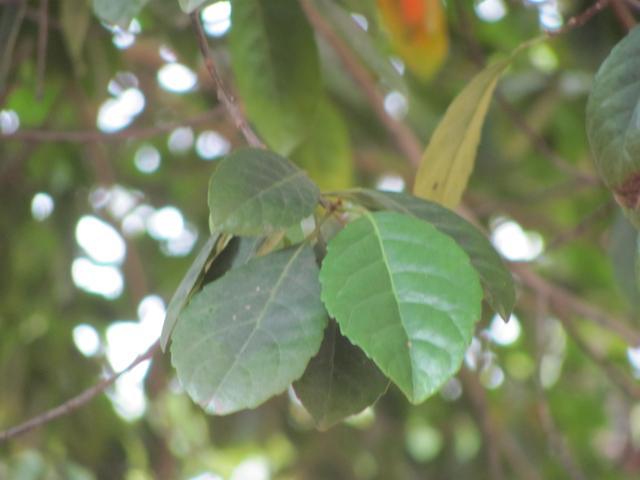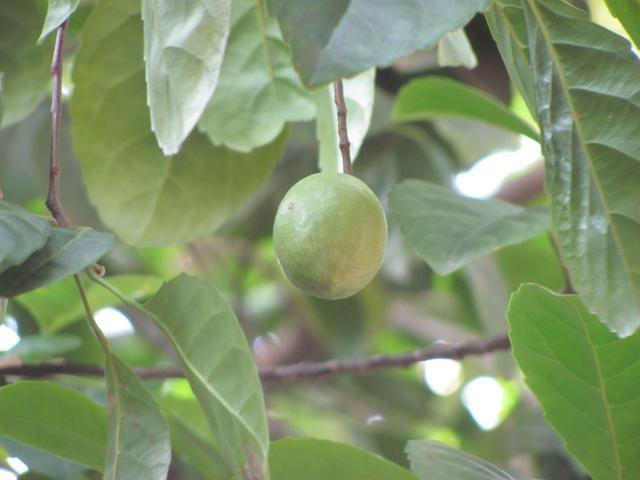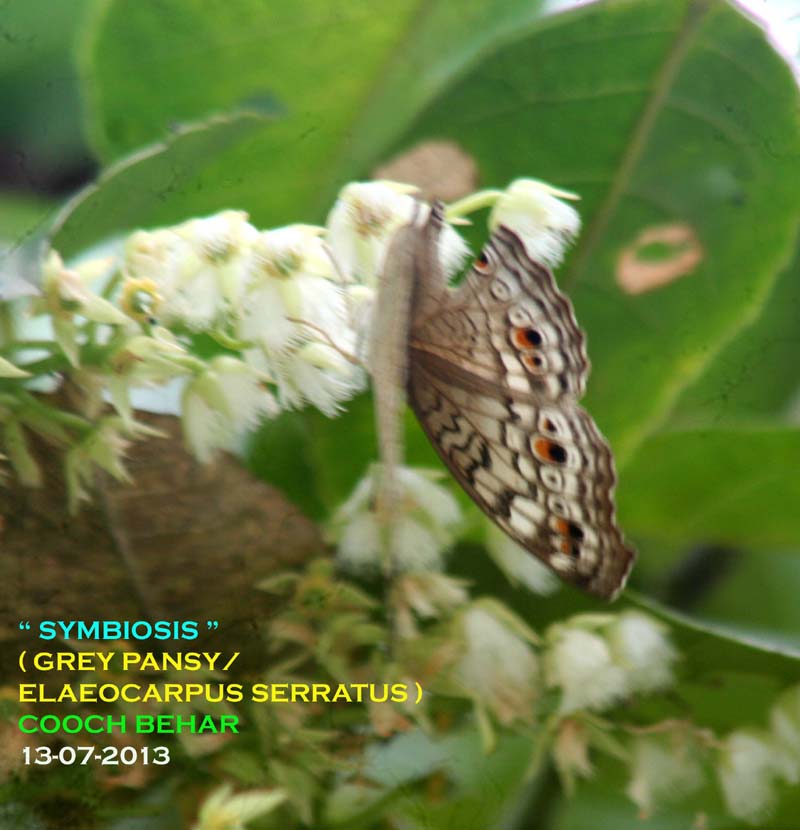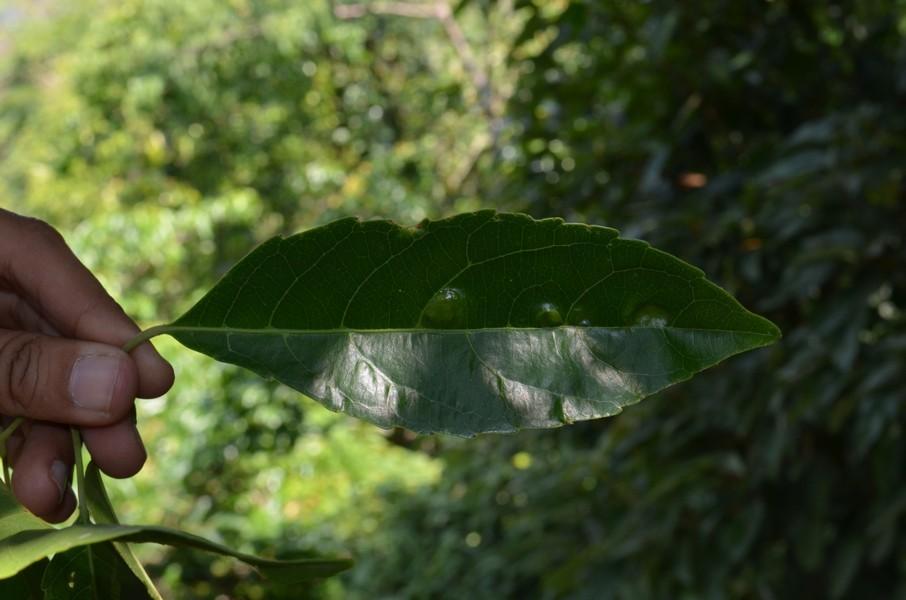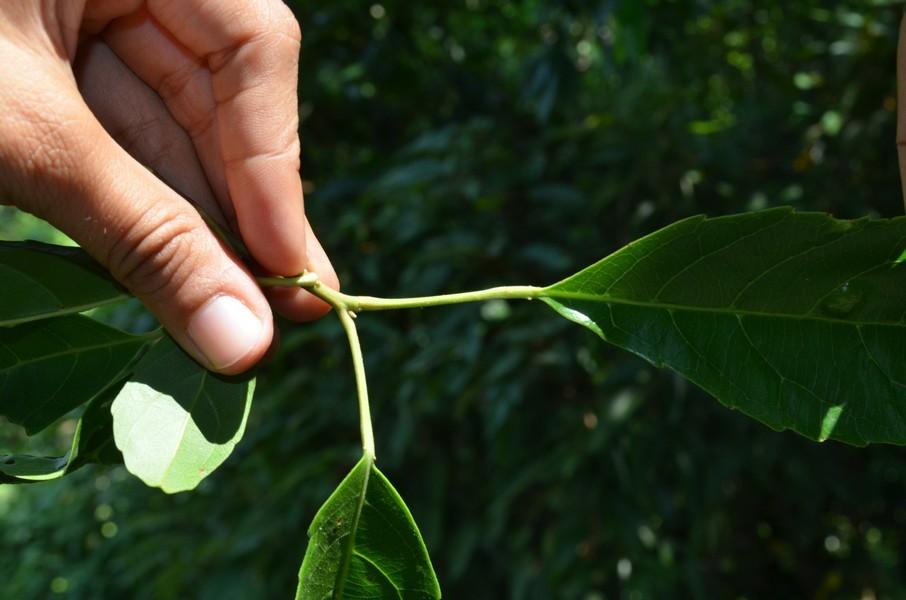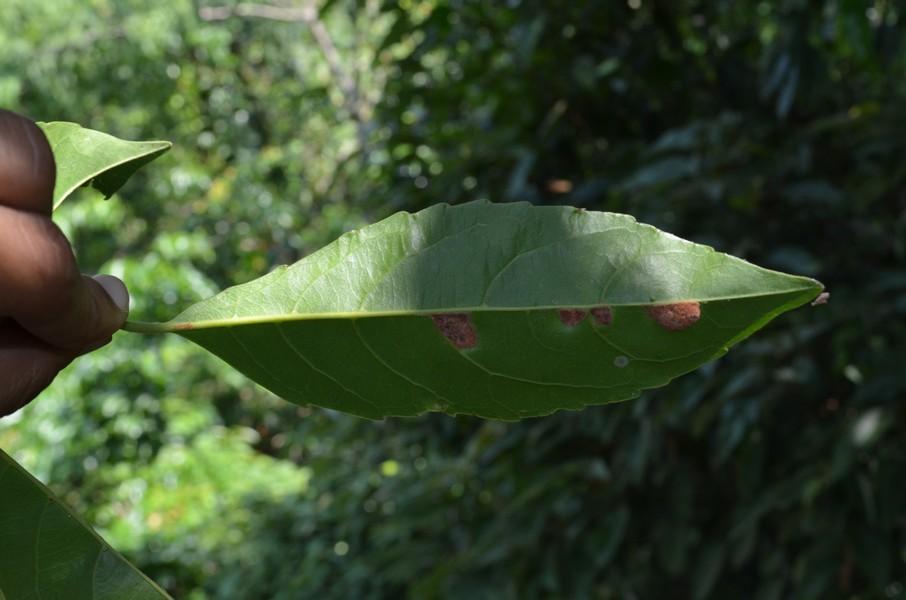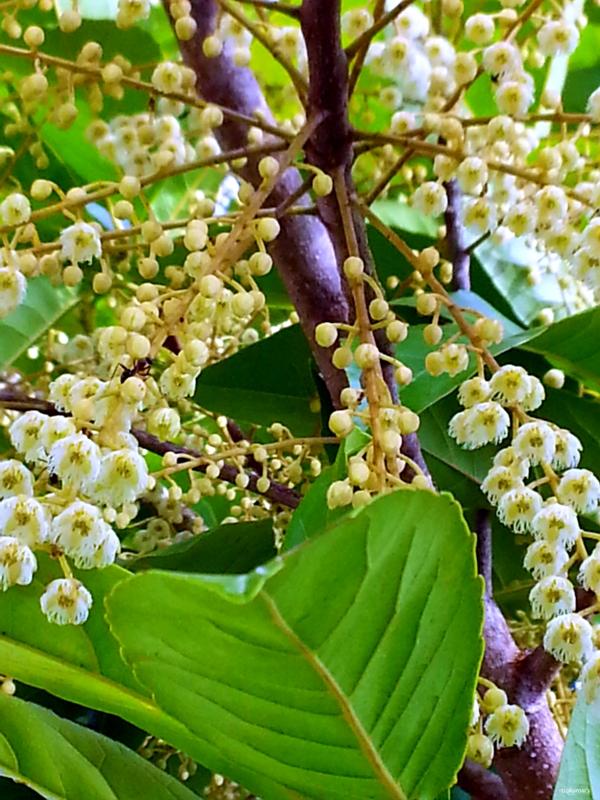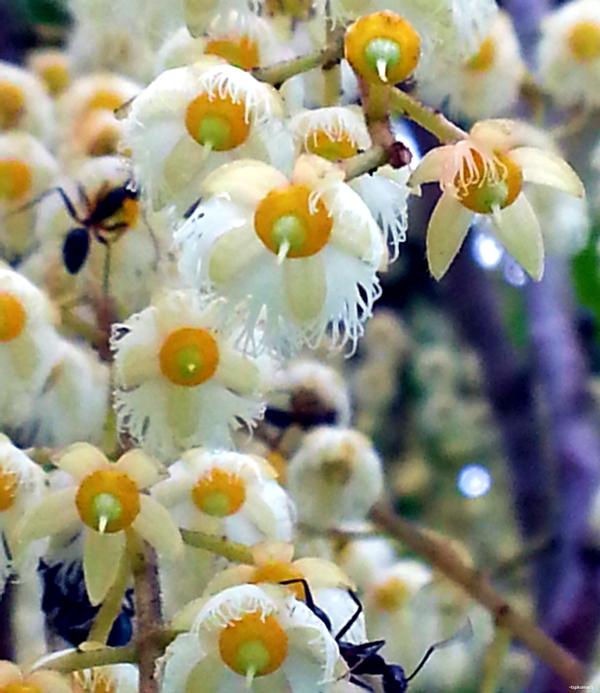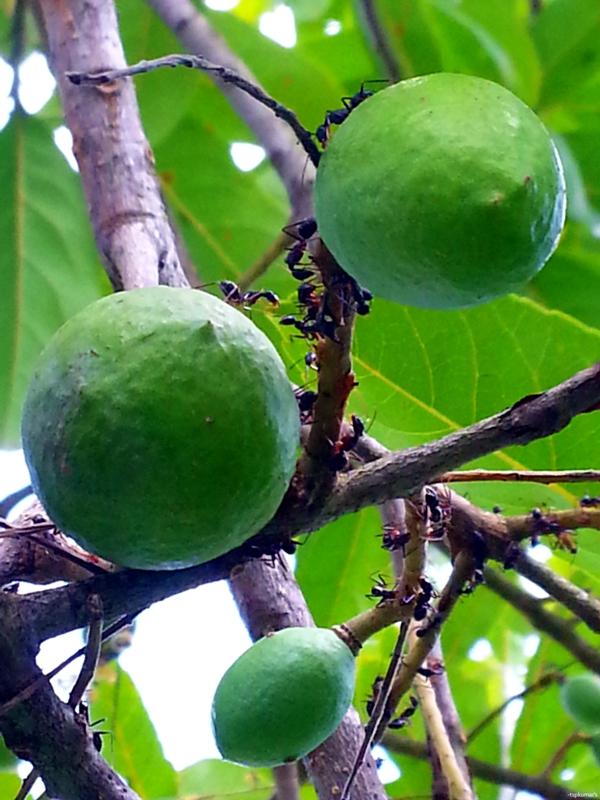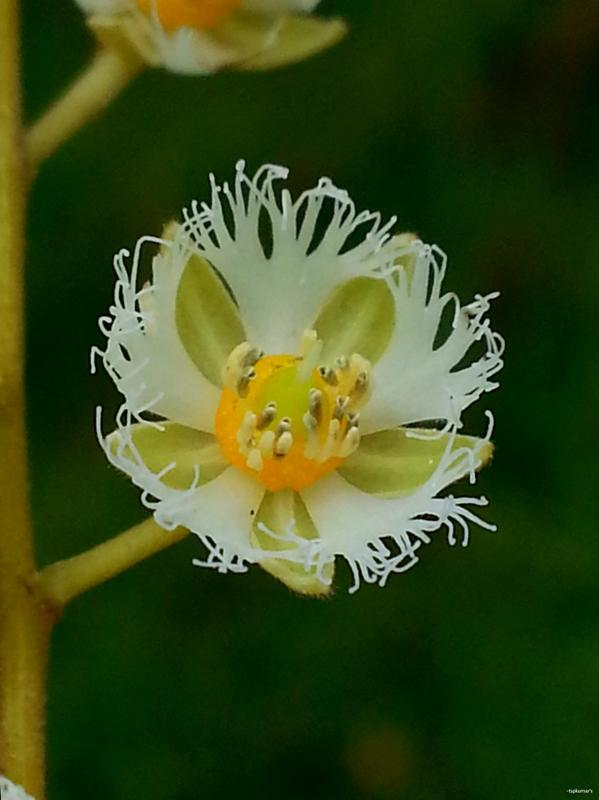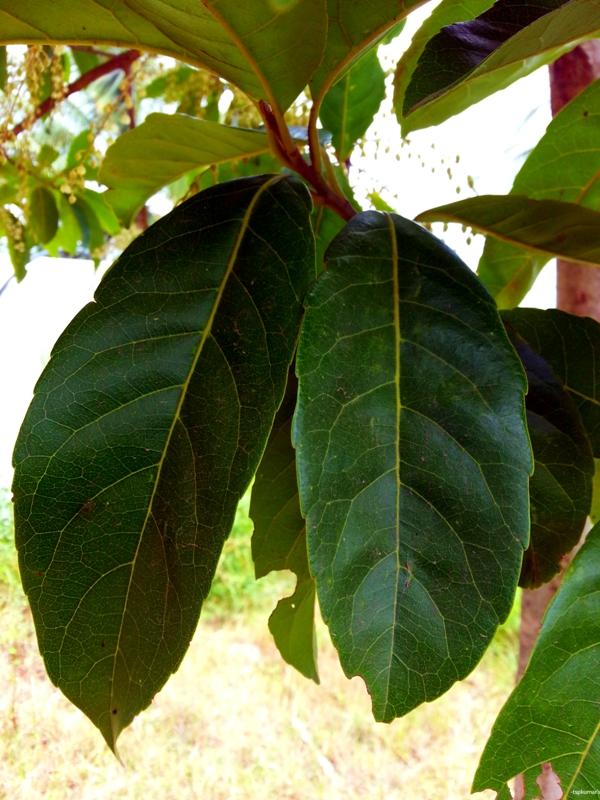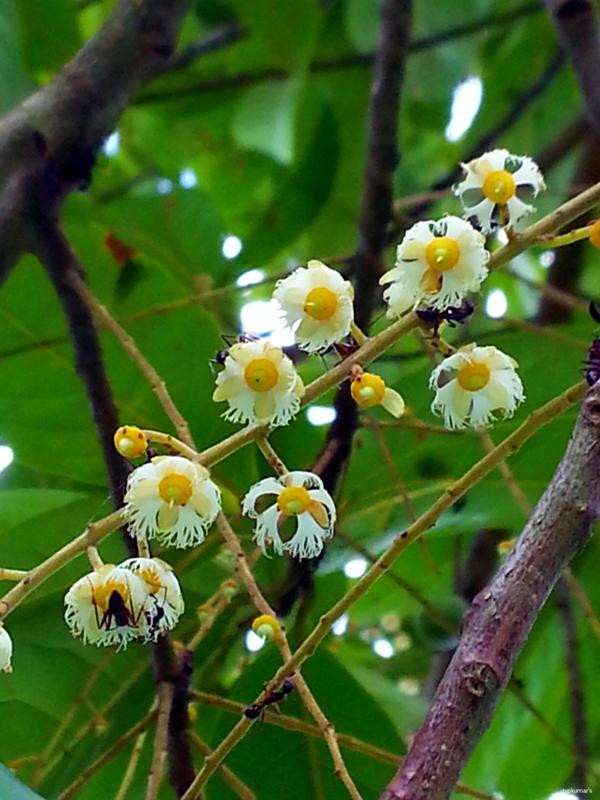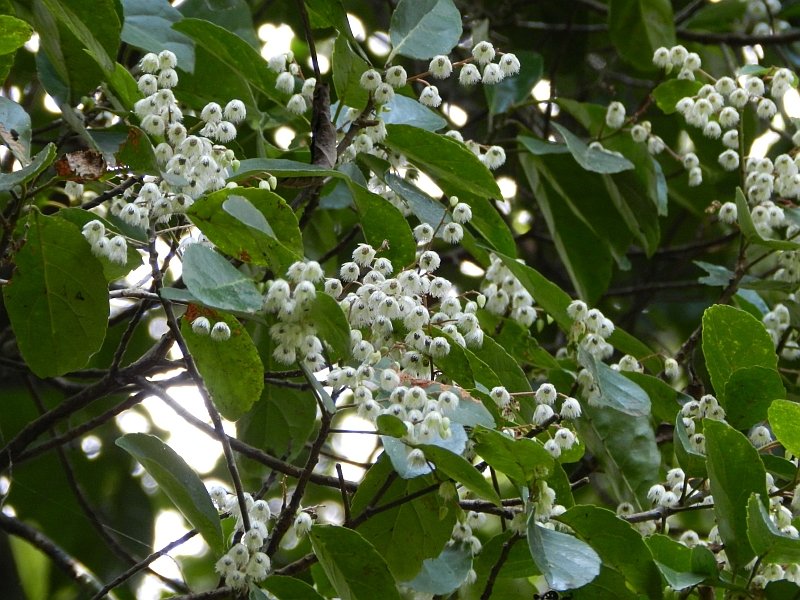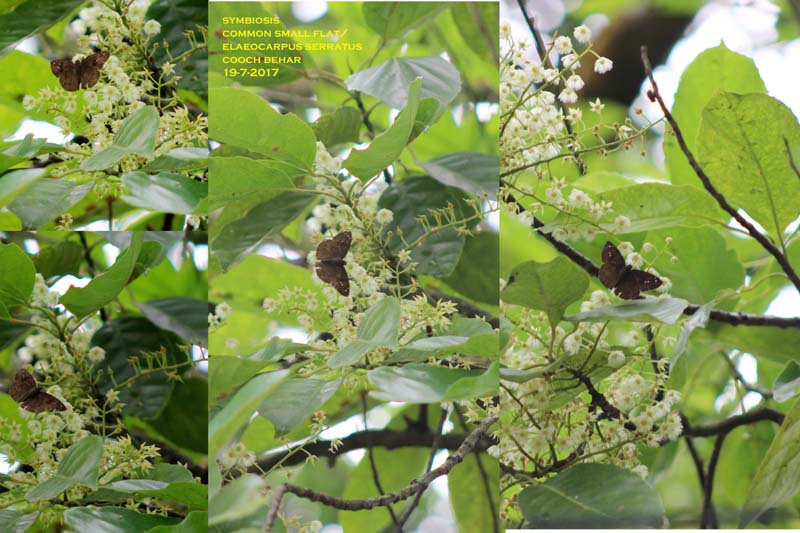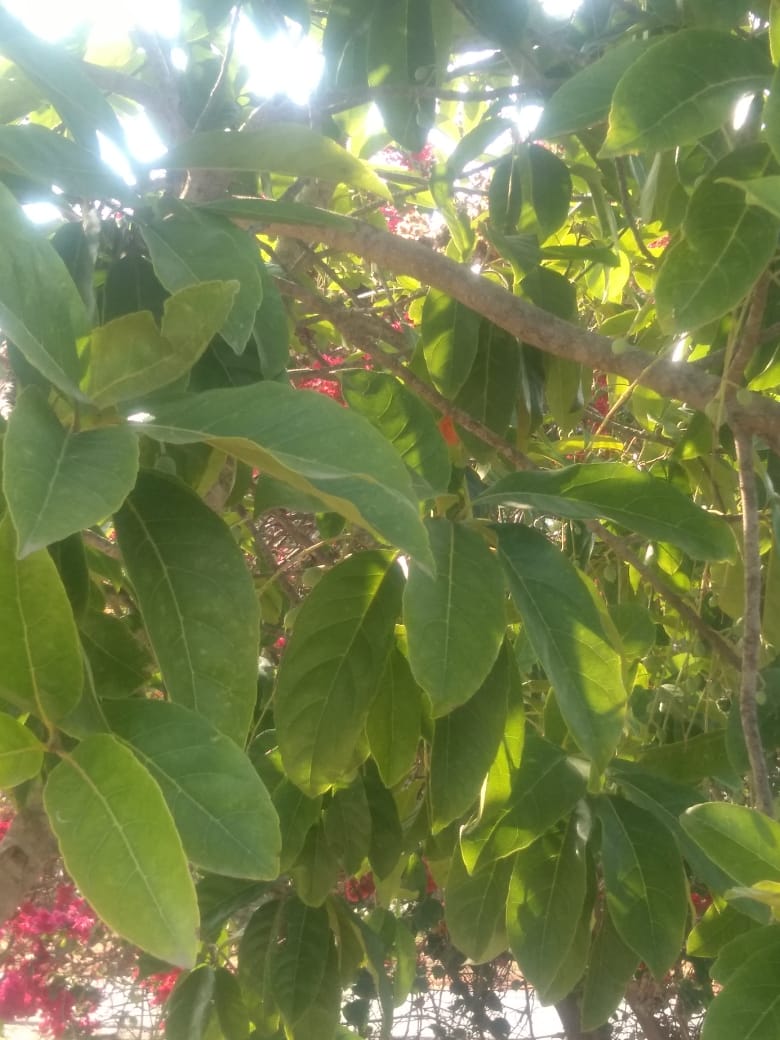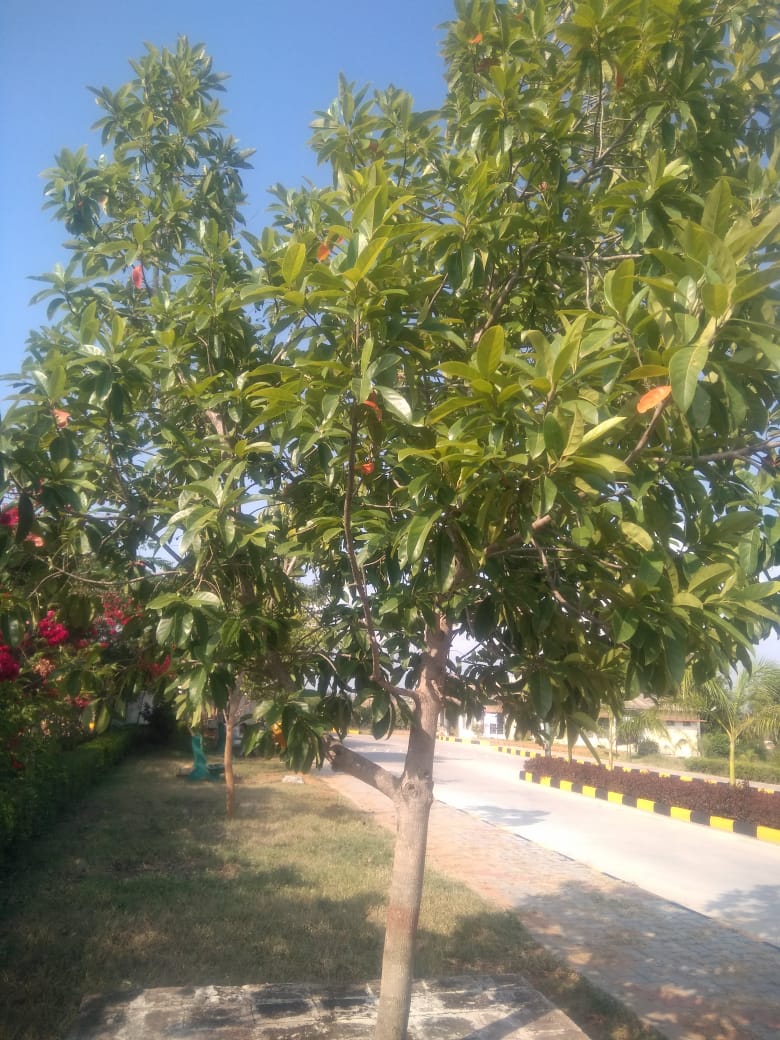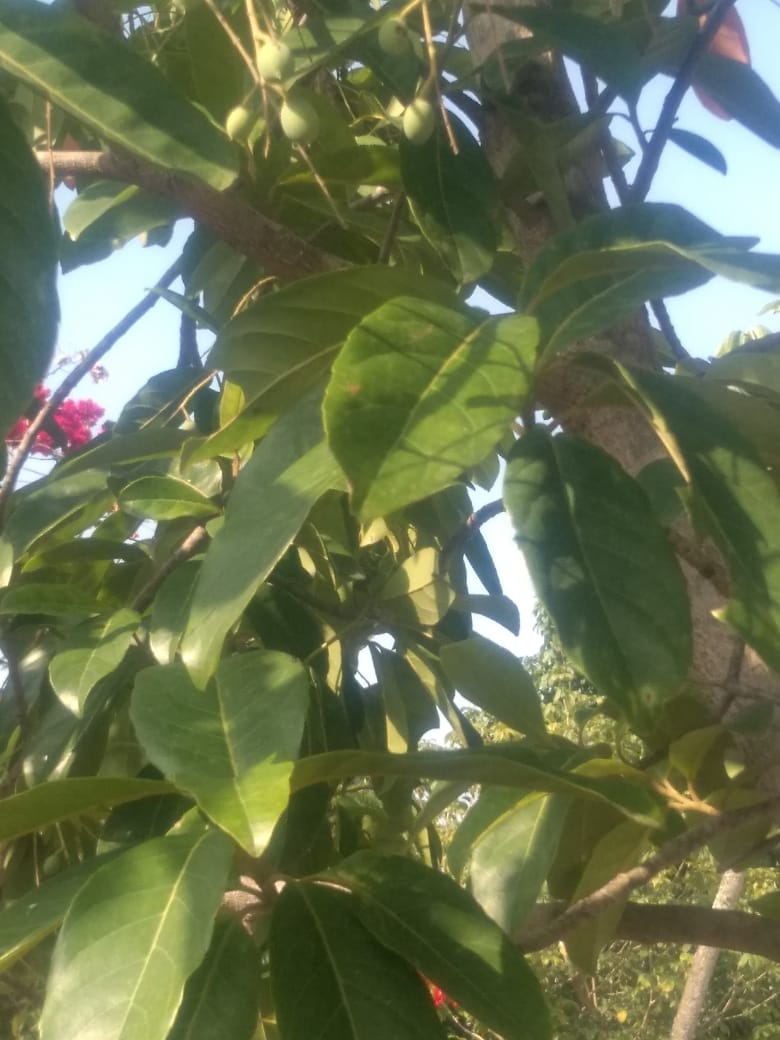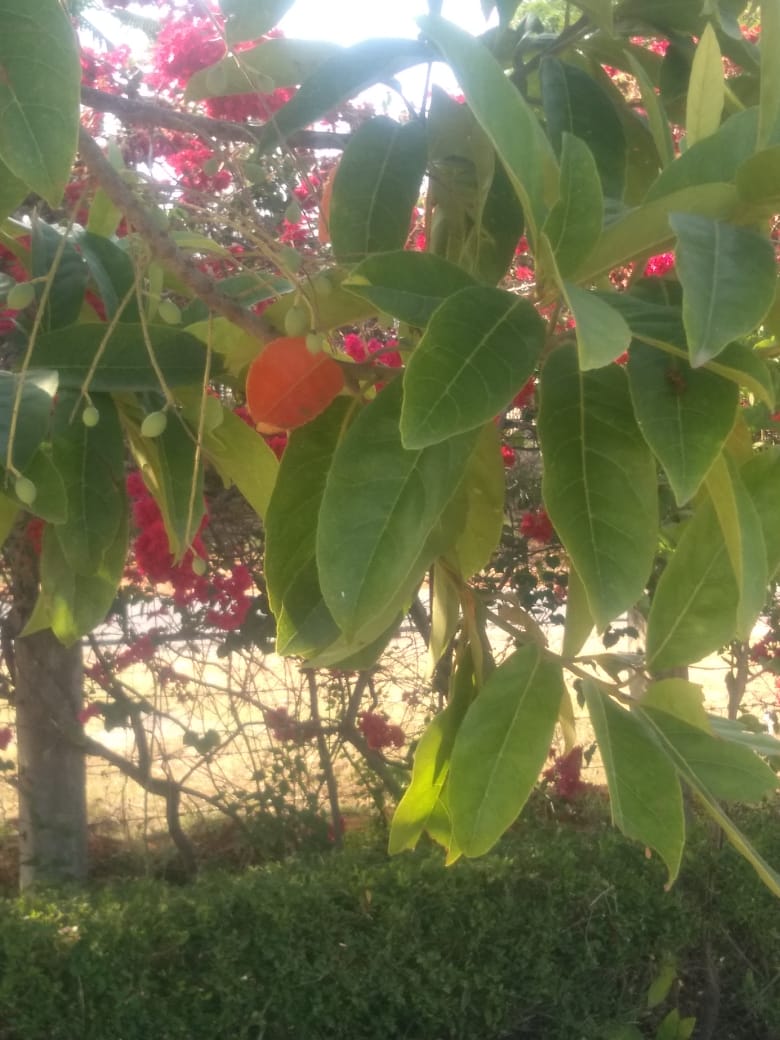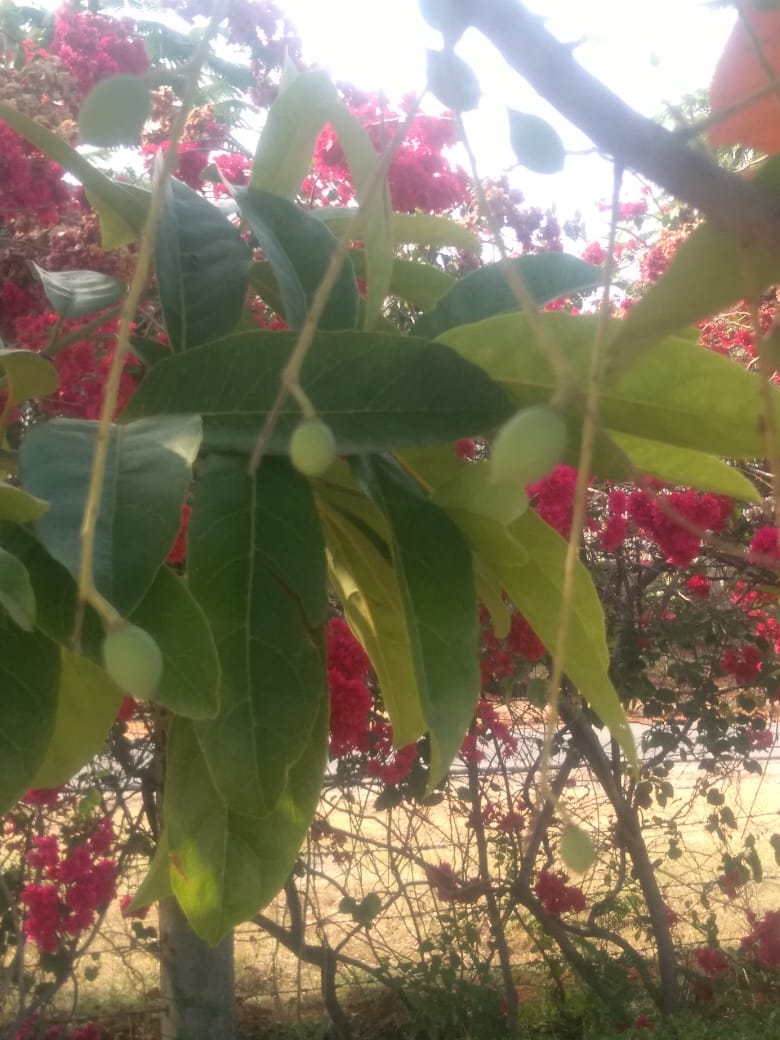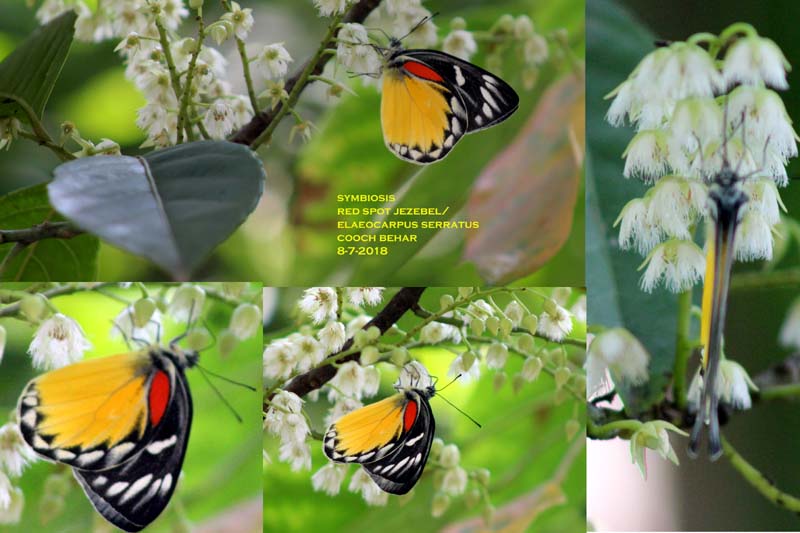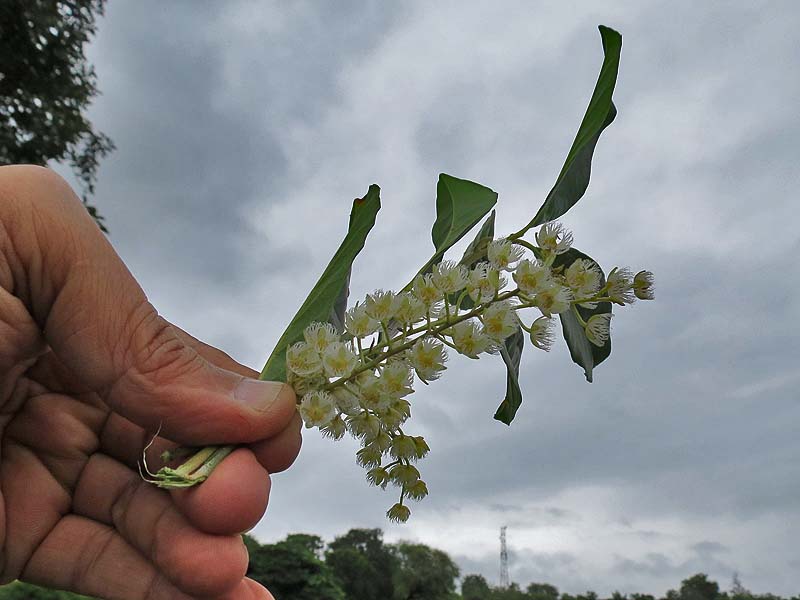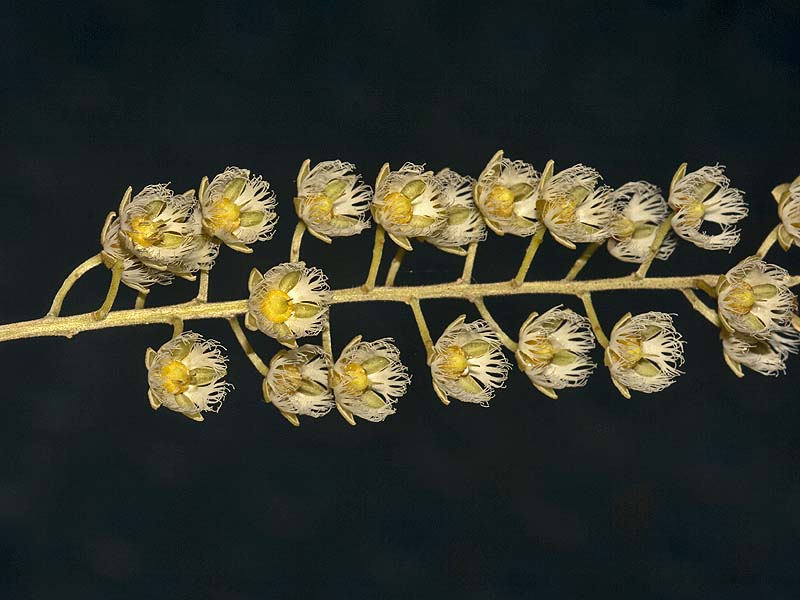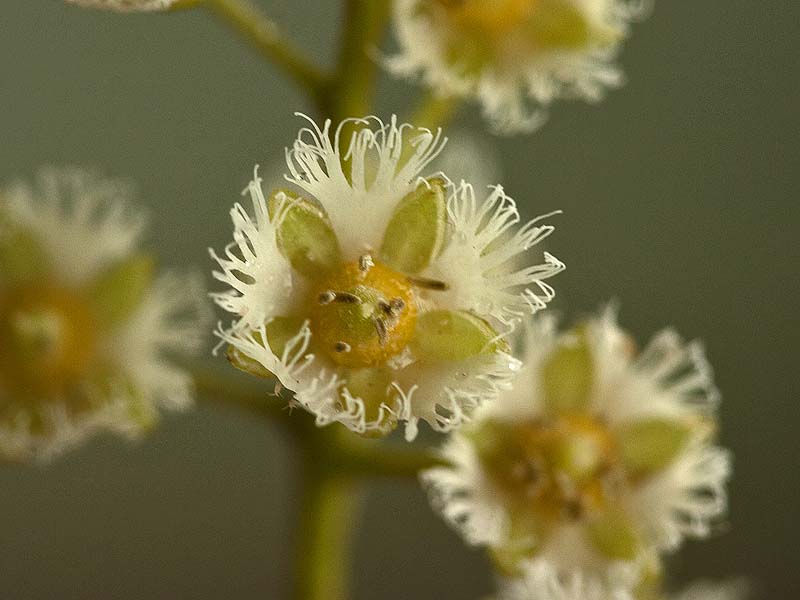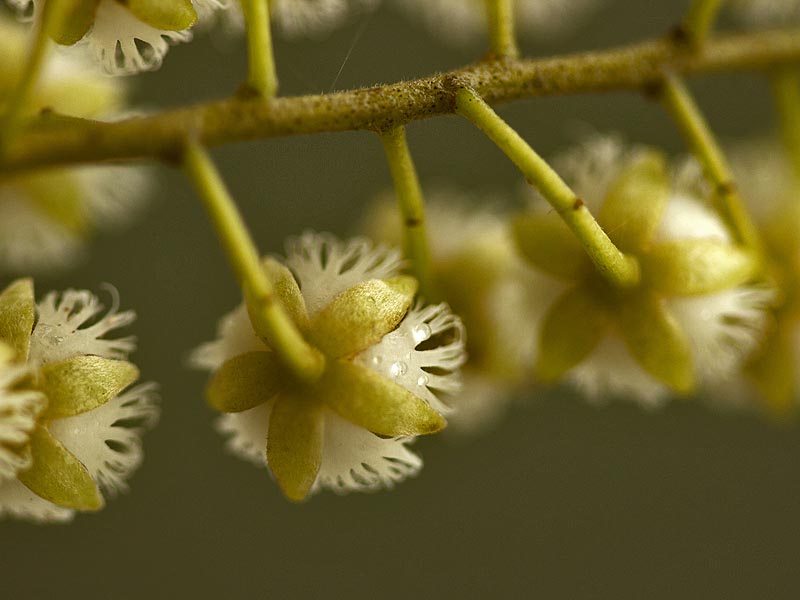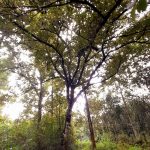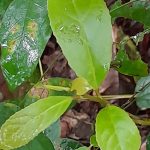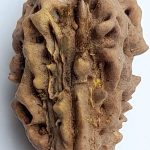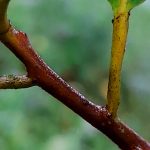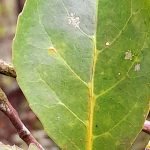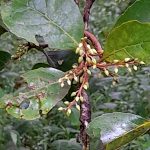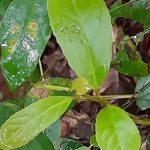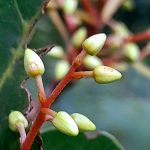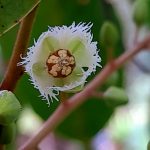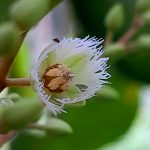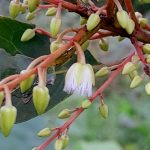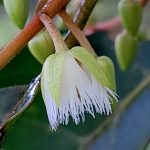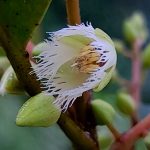|
Elaeocarpus serratus L., Sp. Pl. 515 1753. (syn: Elaeocarpus adenophyllus Wall.; Elaeocarpus angustifolius Wight; Elaeocarpus cuneatus Wight; Elaeocarpus malabaricus Oken; Elaeocarpus oblongus Gaertn. ex Sm.; Elaeocarpus perim-kara DC. ; Elaeocarpus perincara F. Hamilton ; Elaeocarpus serratus Heyne ; Elaeocarpus sylvestris Blanco; Misipus serratus (L.) Rafin.; Monocera serrata (L.) Turcz.) as per Catalogue of Life;
. Tamil: Karai, Karamaram, Olan karai, Ulang karei, Uttraccham Malayalam: Avi, Avil, Karamavu, Nalla kara, Perinkara, Perunkara, Rudraksham, Valiya karai Kannada: Athakunge, Beegada mara, Beejada mara. Habit- Trees up to 18 m tall.
Trunk & Bark- Bark brownish, smooth; blaze orange red.
Branches and Branchlets- Branchlets terete, glabrous, with scars of fallen leaves.
Leaves simple, alternate, spiral, clustered at twig ends; stipules small, lanceolate, caducous; petiole 1.2-4 cm long, swollen at both ends, planoconvex, glabrous, with subulate appendage at the junction of lamina; lamina 5.5-12.5 x 2.5-5 cm, elliptic, apex acuminate with blunt tip, base acute, margin serrate, chartaceous, glabrous, red when senescent; midrib slightly raised above; secondary nerves 5-9 pairs, branched with glabrous domatia at axils beneath; tertiary nerves reticulo-percurrent; higher order reticulation slender, minute.
Inflorescence / Flower- Inflorescence racemes; flower petals white, laciniate, anthers ciliate.
Fruit and Seed- Drupe, oblong or ovoid to 2.5 cm long; seeds 3-4.
Subcanopy tree in evergreen to semi-evergreen forests up to 1600 m.
Indomalaysia; in the Western Ghats- South and Central Sahyadris.
(From India Biodiversity Portal
Attributions- B. R. Ramesh, N. Ayyappan, Pierre Grard, Juliana Prosperi, S. Aravajy, Jean Pierre Pascal, The Biotik Team, French Institute of Pondicherry. ) . The fruits are high in starch and sugar and have low amounts of protein and iron.[citation needed] It may help treat diarrhoea due to its constipating effect.[3][unreliable medical source?].
ELAEOCARPUS SERRATUS: Bangalore – RA – Elaeocarpus variabilis – South Indian Marble Tree (Please Confirm): Flowering Season was October. Nice set of pics. Thanks a lot for sharing. Perhaps by analogy with Australian “Blue marble Tree” , the cobalt shiny marble – sized fruits of E.angustifolius look like blue marbles. I think almost sure it is Elaeocarpus serratus SYMBIOSIS : 398 : Attachments (1). 1 post by 1 author.
Attaching an image of male Great Egg-fly on the flowers of Elaeocarpus serratus (JALPAI).
SYMBIOSIS : 409 : Attachments (1). 1 post by 1 author.
Attaching an image of a Grey Pansy butterfly on the flowers of Elaeocarpus serratus (JALPAI) for id of tree : Attachments (7). 3 posts by 2 authors.
pls id the tree.
alternate phyllotaxy,
oblong fruit
habit- tree
collected from – south maharashtra (not native of south maharashtra region, purchased from some other place before 20 years) This looks like Gurmutga [Elaeocarpus serratus]. The tasty fruit ripen in January. thanx to all Elaeocarpus serratus L.. SN April 36 : 3 posts by 3 authors. Attachments (1).
Elaeocarpus serratus L, (= Elaeocarpus ganitrus Roxb. ex G.Don), Rudraksha cultivated tree, found in GKVK Bangalore and Srisailam temple Andhrapradesh. I am thanking … of GKVK to permit me take the photograph.
Yes, it is laden with fruits nowadays in Pantnagar (Uttarakhand). We have many trees planted here, it is fast growing and come into bearing after 3-4 years. Family: Elaeocarpaceae
Date: 21st March 2015 Place: Aralam WLS, Kerala Habit: Tree Perfect pictures…!!
TSPDEC2015-09-181:Images of Elaeocarpus serratus (Elaeocarpaceae) : 5 posts by 3 authors. Attachments (7) It is my pleasure to share few images of Elaeocarpus serratus (Elaeocarpaceae) Habit: Tree Habitat: Cultivated Sighting: Chikmagalur, Karnataka, about 1000 msl Date: 01-07-2014, 16-07-2014, 22-08-2014, 15-07-2014 and 26-07-2015 Excellent display …!! Id this tree and fruit please : 9 posts by 6 authors. Attachments (1)
The fruits were excellent and the CRPF camp in which this tree stood were busy making pickle of this fruit. I think this is the fruit in malayalam known as Karacka It looks like Ambada [Spondias acuminata]. Sending you a photograph of one of my saplings. Hi, for me it looks like a species of Elaeocarpus. Spondias has pinnate leaves, isn’t it? Did consider Elaeocarpus, but are the fruit used for making pickle? …, my colleague … says fruits of Elaeocarpus oblongus (= E. tectorius; E. glandulosus) are used for making pickle in Madurai region in TN. It is Elaeocarpus (orange coloured ripen leaves (one in the photo) are very good identifying feature in field for this genus) may be “serratus’ or “oblongus“. leaf length and shapes are the main feature for identifying these species. Karaka in kerala is mostly E. serratus. But we should not go with common name. Thanks. Will do some search and find out. By the way what is the common English name of the tree? I too agree with … This may be Elaeocarpus oblongus .. but for first time ‘m hearing that the fruits of this are pickled…. . AKNOV08 Please identify this Elaeocarpus sp. : 15 posts by 3 authors. mimusops sp but which exactly i dont know
that is certainly not Mimusops ! why not? where does it belong? they are in two distinct families..Elaeocarpaceae and Sapotaceae. You must have confused the flowers as they are both white but other than that, they are very different. thanks. it was not the flower but the leaf that reminded me of mimusops… flower “petals and the inflorescence looked very different” too.. and thanks for the key of Elaeocarpaceae.. how about one for the mimusops??? Here is a photo of Mimusops elengi flower for reference – https://www.flickr.com/photos/arun_delonix/14381267335 Very welcome …! , the key for Sapotaceae is also there. To me it seems to be Elaeocarpus shaericus (RUDRAKSHA). If the image is from a tree behind the main FRI building, the tree was planted by Mrs Indira Gandhi. Can be Elaeocarpus serratus. It can’t be Elaeocarpus serratus. This species does not grow in Dehradun. efi page on Elaeocarpus sphaericus To me it appears to be Elaeocarpus serratus L. as per comparative images in efi. White flowers for ID from Chimmony | 27Oct2011AR01: This could be Elaeocarpus serratus L. of Elaeocarpacae family. Yes Elaeocarpus species. I have seen flower similar to this but of different colour also in Karnataka. Please refer the following link.
biotik Leaf descriptions -shape- shape, size, venation & margin agree with the Biotik link, Bark patterns, color and texture too. Fwd: SYMBIOSIS : 958 : 1 post by 1 author. Attachments (1)
Attaching a collage of Small Common Flat visiting flowers of Elaeocarpus serratus (JALPAI). SK1122 18 MAY 2018 : 6 posts by 2 authors. Attachments (7) – around 700 kb each.
Location: Soureni, India
Date: 7 May 2018
Altitude: 2600 ft.
Habit : Wild
Elaeocarpus serratus L ??
I also think closer to images at Elaeocarpus serratus L. as per comparative images at Elaeocarpus I am posting herewith a few photographs of Rudraksha tre photographed in Mysore. Please Id the tree species. The photographs were sent by one of the readers of my article in Star of Mysore.
I am sending 2 more photographs taken recently. These might help ID the species.
Attachments (2) SYMBIOSIS : 1340 : 4 posts by 4 authors. Attachments (1)
Attaching a collage of Peacock Pansy visiting flowers of Elaeocarpus serratus (JALPAI).
running after butterflies keeps one hale and hearty. good Clear image of flowers also would have been an advantage. SYMBIOSIS : 1339 : 4 posts by 4 authors. Attachments (1)
Attaching a collage of Red spot Jezebel visiting flowers of Elaeocarpus serratus (JALPAI).
Elaeocarpus sphaericus : Attachments (6). 12 posts by 7 authors.
Elaeocarpus sphaericus
Observed this tree outside a temple at village Chas (Rajgurunagar) on 24th Aug 2013. Please validate. Nice find and beautiful photographs.. According to the Plant List Elaeocarpus sphaericus (Gaertn.) K.Schum. is a synonym of Elaeocarpus serratus L.
These pics also match with those for E. serratus on the Biotik site. (It is not the same as Rudraksh) I agree what you state but BSI Flora clearly states that these are two distinct species and the key also says that the leaves of E.serratus are serrate and Drupes 1-2 seeded whereas they are obsurely crenate or serrate Drupes are 5-seeded. (The leaf margin of the above plant is almost smooth.)
and the Marathi name is “Rudraksha” and that for E.serratus is “Perinkara“ this is quite confusing. Several of the species are known as rudraksha in various sources. Thanks a lot. Such interactions are mandatory. Let us see what conclusion is reached. Elaeocarpus serratus is native to Western Ghats evergreen forests.
The leaf margins are serrated and the fruits are edible. It is called Kara in Malayalam.
Its fruits (karakka) are used to make pickles.
Several species of Elaeocarpus are generally called rudraksh.
But I think the sacred rudraksh which is used to make religious malas is from the seeds of Elaeocarpus ganitrus which I believe is a Himalayan species.
No idea about E.sphaericus.
Hoping to hear more from the experts. Interesting discussion. I will upload my Elaeocarpus pictures in new threads. efi pages on Elaeocarpus sphaericus & Elaeocarpus serratus
Awesome photos! Great going by … ! Today’s beauty
1 image .   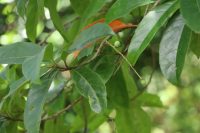 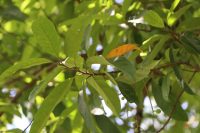 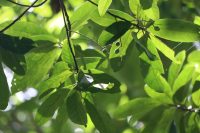  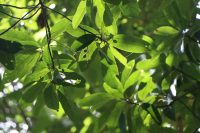 Regarding identification of the sp. collected from Nayagargh Odisha on sept. 2023: 7 high res. images. I think it may be . MS,Nov.,2923/12 Elaeocarpus sp. for id: 1 image.
Location : Aizawl, Mizoram Altitude : ca.1,000 m
Date : 06-11-2022
Habit : Tree
Habitat : Wild/cultivated
Elaeocarpus serratus ? Indian Olive . Identify the Eleocarpus sps..: 3 high res. images.
Eleocarpus tectorius..? Difficult to say with these images.
Adding photos for further reference It may be .
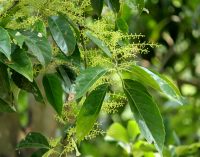 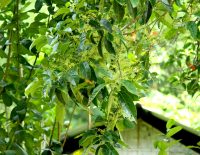 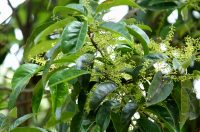 Tree sp. from Assam KD 23 Jun 24: 3 images. Attached images are tree sp. from Assam. Please ID of the sp. Date : 07.06.24 Location: Assam Family : ?? Genus & species : ?? Habit : Tree Elaeocarpus sp.? Appears close to images at . References:
Catalogue of Life BSI Flora of India with details & keys (Volume 3- 1993) GRIN Biotik The Plant List Wikipedia Annotated checklist of Flowering plants of Nepal Biodiversity In India, Volume 4 edited by T. Pullaiah (Description- other species described is E.tuberculatus Roxb.) Indian Medicinal Plants: An Illustrated Dictionary edited by C.P. Khare |
Elaeocarpus serratus
Updated on December 24, 2024



